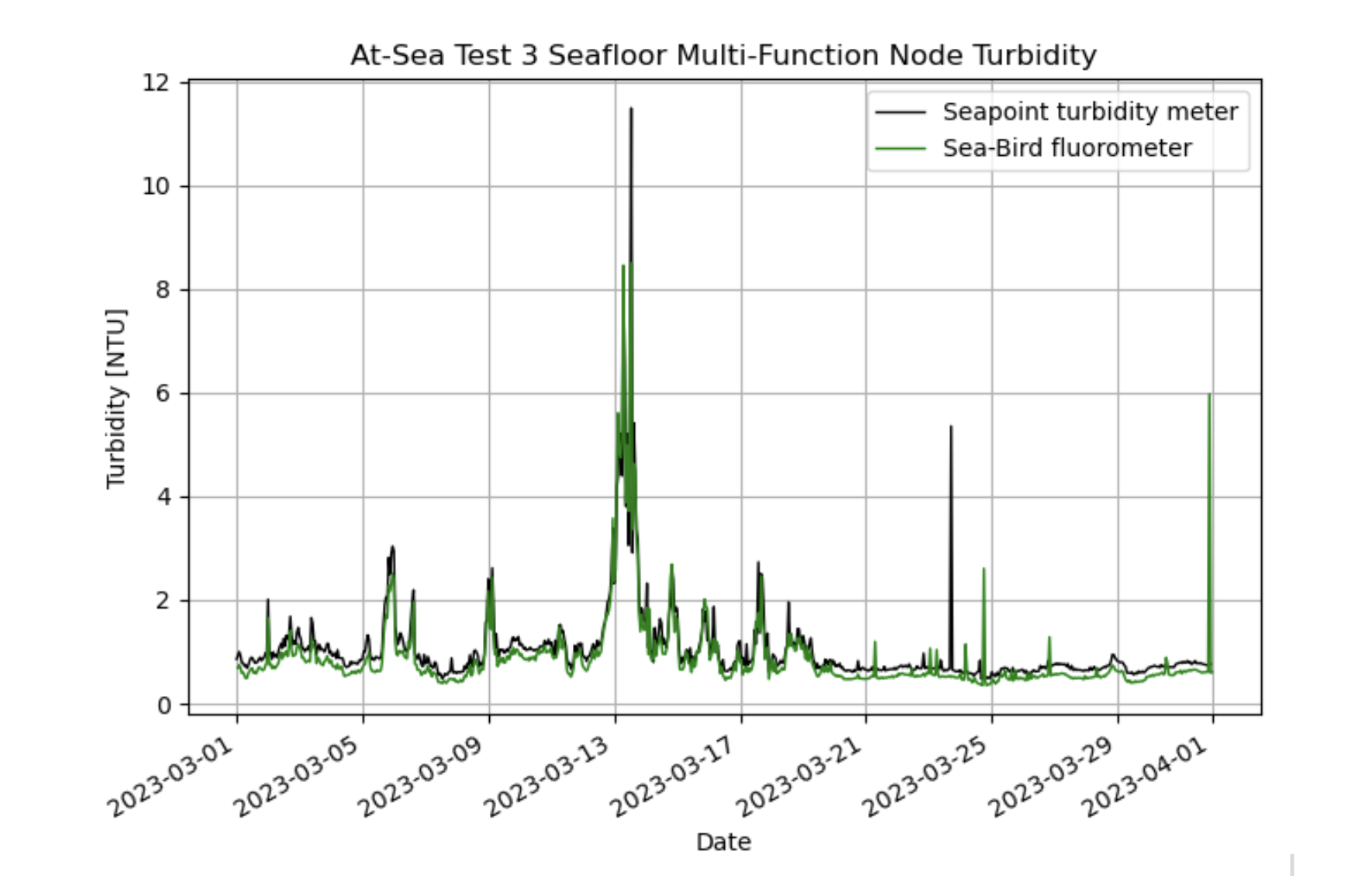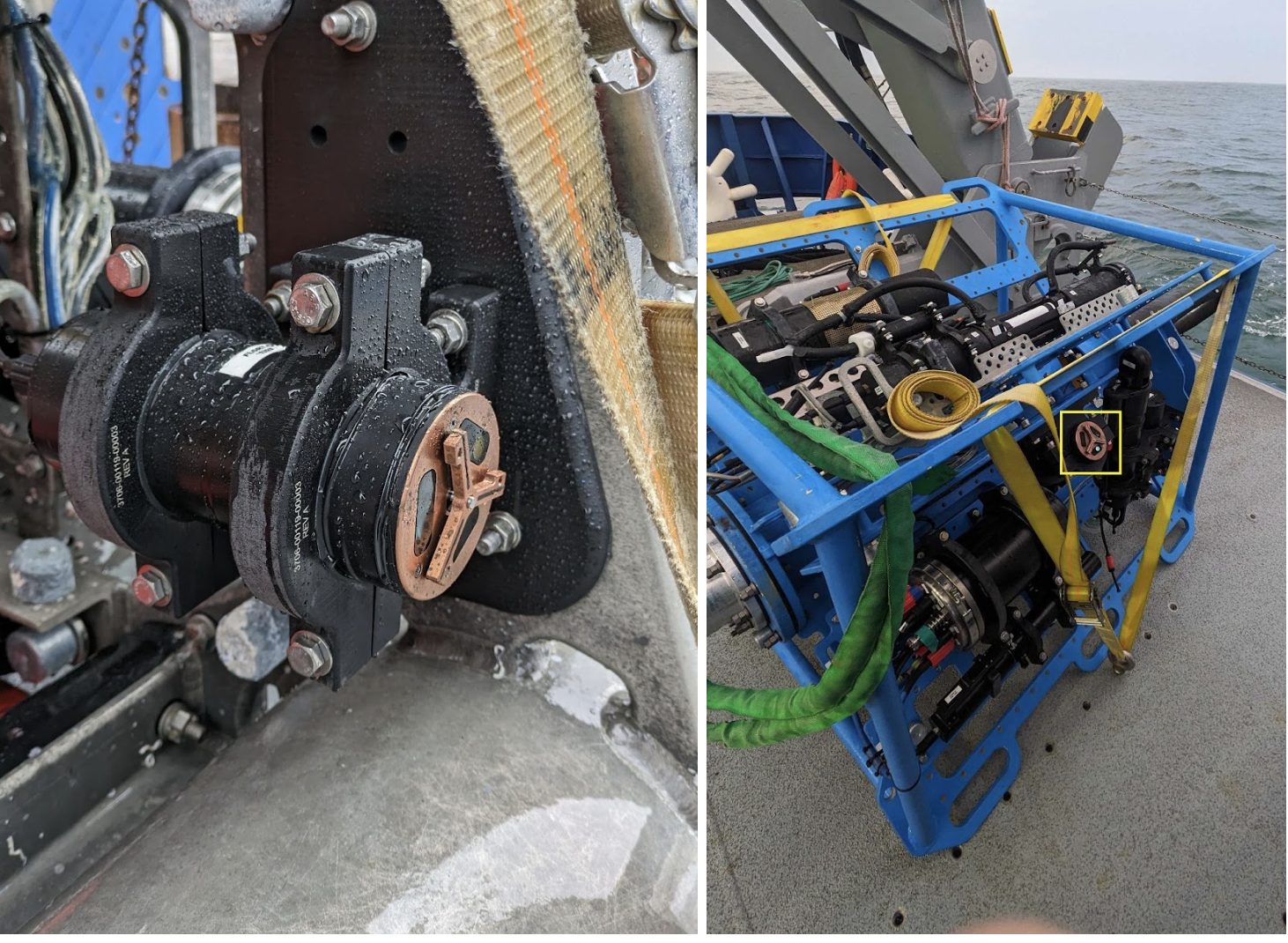Pioneer MAB Providing Turbidity from OOI Core Fluorometers
OOI is now providing telemetered turbidity measurements from the Coastal Pioneer Mid-Atlantic Bight (MAB) Array using Sea-Bird Scientific ECO triplet-w optical sensors. A test deployment showed that these instruments measured turbidity consistent with co-located turbidity meters that were recommended at the scientific community workshops. The results of the test deployment confirmed that OOI could satisfy the request for turbidity data with re-purposed instruments already in the suite of OOI core sensors. OOI has used ECO triplet-w optical sensors to measure chlorophyll a, CDOM fluorescence, and optical backscatter. This April, ECO triplet sensors were deployed with a secondary calibration from the vendor to convert backscatter channel (700 nm wavelength) measurements to turbidity in Nephelometric Turbidity Units (NTUs).

To conduct the test deployment, turbidity measurements were recorded every 15 or 30 minutes from 1-minute bursts of sampling at 1 sample per second (1 Hz) by both the ECO-triplet and co-located community-recommended turbidity meters. Turbidity in NTUs from the ECO triplet was calculated by applying a vendor-supplied scaling factor to the raw voltage counts minus the dark counts. The requested turbidity meters reported their measurements as a mean of the sample burst measurements, so the mean of each ECO triplet sample burst was computed for comparison. The burst means from ECO triplets were compared with the other turbidity meter measurements at the same location and depths. A time series comparison from 35 m depth during March 2023 showed a mean difference of 0.2 NTU between the two instruments. The standard deviation of the difference at 35 m depth was 1.2 NTU (Fig. 1). The March 2023 comparison at 7 m depth showed a mean difference of 0.1 NTU. The standard deviation of the difference at 7 m depth was 0.06 NTU. Turbidity measurements recorded before and after a CTD cast at the start of the test deployment were also within 0.15 NTUs of the mean turbidity measurements in the surface mixed layer and bottom layer from a rosette-mounted Wet Labs FLNTURTD. The full report on the test deployment, At-Sea Test 3, is available upon request. Based on the results of the test deployment, the OOI Program determined that the ECO triplet-w optical sensors with a secondary calibration could deliver good quality turbidity data.
ECO triplet optical sensors deployed as part of the Coastal Pioneer MAB Array now allow OOI to serve turbidity data from all 3 surface moorings at 7 m depth and 1 m above the seafloor. The use of existing OOI core sensors simplified integration into the instrument platforms, since additional ECO triplets only had to be added to seafloor nodes, and it streamlined the process of serving data, since existing sensor processing code could be reworked to provide turbidity data. Turbidity data delivered by OOI include all samples recorded during a sample burst so that data users can apply their preferred aggregation method. Since April, the ECO triplets on the near-surface platforms (Fig. 2, right) have been sampling at 1 Hz for bursts of 3 minutes four times an hour, and on the seafloor nodes (Fig. 2, left) the sensor samples at 1 Hz for 17 minutes once an hour. Data users can view telemetered turbidity data here: Coastal Pioneer MAB Array turbidity on Data Explorer.

